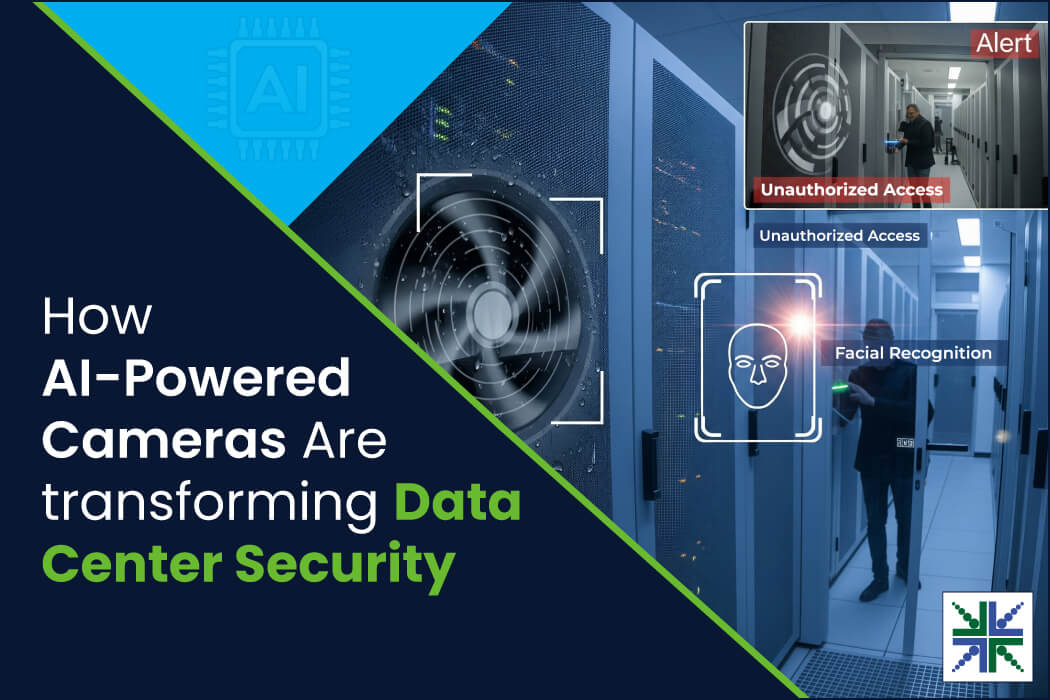For all practical purposes, data centers are proverbial nerve centers of digital infrastructure. They process, store, and transmit enormous volumes of data, much of it sensitive, confidential, or proprietary. However, it makes them natural targets for intrusion, sabotage, and policy violations.
Traditional security measures like physical barriers, access cards, or human patrols don’t offer the speed and flexibility to safeguard data centers in real time. Hence, it has resulted in wider adoption of AI-powered camera systems. These cameras process the information on the edge, identify anomalies in real time, and more – all without relying on human intervention.
In this blog, you’ll learn about the importance of AI-based surveillance in data centers and their popular use cases.
Why AI-Based Camera Surveillance Is Critical in Data Centers
The stakes for data center security have intensified. Incidents such as unauthorized access, hardware tampering, and insider threats can cripple entire operations. Older camera systems require human operators to sift through hours of footage, interpret visual clues, and escalate incidents. This latency in response time leaves gaps that adversaries can exploit.
AI-powered automated surveillance bridges these gaps by introducing speed, autonomy, and learning capabilities into the monitoring process. These systems continuously interpret live video streams using embedded AI models that are trained to detect a wide range of behavioral deviations, such as:
• Real-time video analysis: Instead of relying on human oversight, the AI processes video frames locally, classifies actions, and compares them with predefined behavioral baselines. It examines movement patterns, object recognition, directional shifts, and dwell times in real time.
• On-device computation: AI-powered cameras serve as both sensors and processors. Each unit captures high-resolution imagery and runs neural inference tasks directly on the device. This edge-based architecture eliminates the need to route footage to a central processor, which reduces latency and supports rapid decision-making.
So, when anomalies like repeated entry attempts, restricted zone breaches, or extended presence near sensitive infrastructure occur, the cameras:
• Trigger event-based alerts
• Notify control systems
• Log incident metadata automatically
Top Camera-Based Use Cases of Data Center Surveillance
Real-time anomaly detection
AI-powered camera-based systems are trained to identify patterns that suggest unauthorized activity, environmental hazards, or operational drift. For example, an individual loitering near a restricted zone or attempting to turn off sensors triggers automated scrutiny.
Onboard neural engines parse each frame captured. The AI-powered camera identifies objects, tracks movement vectors, and evaluates interactions against a baseline of standard activity. Such contextual intelligence gives administrators a view of what is happening and why it may need intervention.
Over time, machine learning models adjust and refine their criteria, improving their grasp of routine operations.
Improved access governance
One of the most sensitive zones in a data center is the physical entry point. AI-powered cameras integrated with biometric readers, badge systems, and scheduling software provide robust oversight. Each access event is cross-verified through facial recognition, gait analysis, or pattern-based tracking.
When staff or visitors request entry, the system compares their real-time footage with stored authentication models. In cases of mismatch, the AI-enabled camera can prevent relay of the access request to the control server. It eliminates reliance on human verification, which may be prone to error or fatigue. So, the system can detect tailgating attempts, invalid badge usage, and unauthorized movement into restricted sectors.
Furthermore, AI-powered surveillance cameras operate around the clock with negligible downtime, making them perfect for the uninterrupted nature of data center environments. Unlike conventional systems that depend on recording and retrieval, these devices process and respond to inputs locally.
Cameras positioned across ingress points, server rooms, power units, and cooling systems create a mesh of observational intelligence. Hence, when any AI-powered camera detects a deviation, the system correlates this with nearby visual feeds, access logs, and environmental data to establish intent.
Cameras positioned across ingress points, server rooms, power units, and cooling systems create a mesh of observational intelligence. Hence, when any AI-powered camera detects a deviation, the system correlates this with nearby visual feeds, access logs, and environmental data to establish intent.
Predictive infrastructure monitoring
AI-powered camera systems also contribute to maintaining operational uptime. Positioned near hardware racks, power grids, and HVAC systems, these cameras analyze visual cues that precede component failure. For instance, a slight discoloration near a transformer, abnormal fan rotation, or unexpected condensation patterns can be flagged instantly.
These visual cues, when linked with sensor data, form predictive models. System administrators can prioritize maintenance requests, reallocate loads, or shut down zones before damage escalates.
In edge deployments, this can prevent cascading outages that disrupt the larger network. This form of visual telemetry reduces the burden on manual checks and extends asset lifespan.
Accelerated response to incidents
In crises, such as fire outbreaks, attempted breaches, or mechanical anomalies, AI-powered surveillance cameras can direct automated response flows. They synchronize with fire suppression systems, lockdown protocols, and emergency lighting. Because they understand spatial orientation, these cameras can track movement paths, guide responders, and restrict further access.
Once an incident is detected, the AI-enabled camera system logs timestamps, captures snapshots at critical junctures, and tags metadata for forensic review. So, investigations can proceed without delay while reducing the possibility of data loss, and helping verify the chronology of events.
e-con Systems’ High-Quality Cameras For Data Center Surveillance
Since 2003, e-con Systems has been designing, developing, and manufacturing OEM cameras. We offer various camera modules with sensors that are ideal for surveillance applications, including those handling data center security.
By partnering with us, you get an imaging solution pioneer who has the required expertise and experience to achieve a faster time to market.
Use our Camera Selector to view our full portfolio
If you need an expert to help find the right camera for your data surveillance system, please write to camerasolutions@e-consystems.com.

Ram Prasad is a Camera Solution Architect with over 12 years of experience in embedded product development, technical architecture, and delivering vision-based solution. He has been instrumental in enabling 100+ customers across diverse industries to integrate the right imaging technologies into their products. His expertise spans a wide range of applications, including smart surveillance, precision agriculture, industrial automation, and mobility solutions. Ram’s deep understanding of embedded vision systems has helped companies accelerate innovation and build reliable, future-ready products.




